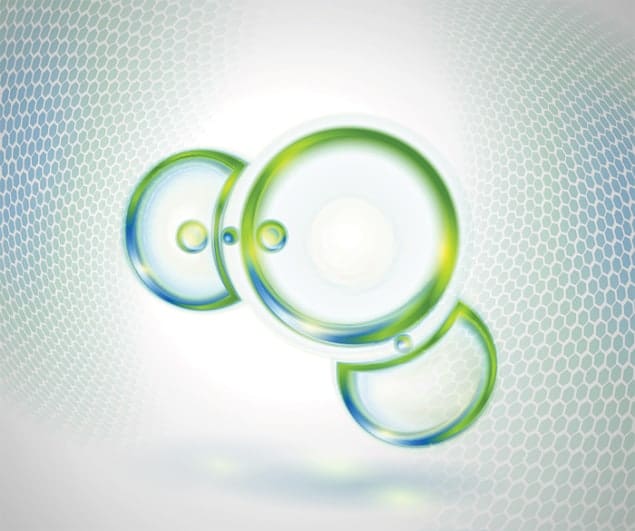
The idea that liquid water can exist in two different forms has been controversial since it was first raised more than 20 years ago. But now the existence of the “liquid–liquid phase transition” in water has been emphatically challenged by two researchers at the University of California at Berkeley, who say that their extensive search for it in computer simulations has revealed no such thing. Instead, they say, the earlier claims stemmed from the common problem of interpreting simulations before they have reached their equilibrium state.
The possibility that liquid water has two different phases dates back to 1992 when Gene Stanley at Boston University and colleagues investigated the metastable region of deeply supercooled water. Using computer simulations rather than experiments, which are hard to do as the water tends to freeze to ice, Stanley and colleagues found that below about –75 °C and at pressures of several thousand atmospheres, metastable liquid water can spontaneously separate into two forms. The phase boundary between them ends in a critical point, where the two types of water become indistinguishable.
Order in chaos?
The idea that a liquid – essentially a dense jumble of disordered molecules – could have two different forms was surprising as it is hard to see how there can be two distinct kinds of disorder. Water molecules, however, are different, as they link into a constantly changing 3D network via hydrogen bonds. Each molecule has (on average) four near neighbours in a tetrahedral arrangement, making the local structure of the liquid relatively orderly. However, the hydrogen bonds tend to hold the molecules “at arm’s length”, keeping them further apart than they would otherwise be. In ice this creates a rather open crystal structure, but in liquid water many of the hydrogen bonds are deformed or broken, allowing the molecules to come closer.
Stanley and colleagues saw the liquid–liquid transition as a reflection of two opposing tendencies: on the one hand, the molecules want to maintain a fairly open structure through hydrogen bonding, but on the other hand they achieve denser, random packing when bonds are broken. One of the putative metastable forms of water was therefore a “low-density liquid” (LDL) and the other a “high-density liquid” (HDL).
Our calculations are completely inconsistent with David Chandler’s – we clearly see two, not one, liquid phases
Pablo Debenedetti, Princeton University
Several other liquid–liquid transitions have also since been found, both in simulations and in some experiments in liquids that have a similar tetrahedral coordination to water, such as silicon and phosphorus. Indeed, Stanley has suggested that many of water’s famous anomalies – for example, the fact that its density peaks at 4 °C – are an echo of the two distinct liquid phases far inside the metastable region.
No distinctions
But now David Limmer and David Chandler at Berkeley claim their computer simulations show only one liquid phase in the metastable region, which eventually freezes to ice. Their suggestion has been provoking vigorous debate ever since their first paper on the matter was published in 2011. The new work is more exhaustive, but still finds no evidence for the liquid–liquid state.
So why have others seen the transition? Limmer and Chandler say that, in a simulation, it is not enough to wait for the density of the system to settle down to a steady state, which might be taken as a sign that the system has reached its equilibrium state. They say one needs to wait long enough for equilibration of a second parameter, which distinguishes an amorphous phase from a crystalline one. But the latter, they say, can take thousands of times longer to equilibrate than the density because it involves the reorientation of large domains during the transition from liquid to ice.
“On the way to crystallization, [the second parameter] changes imperceptibly on a timescale where the density will fluctuate many times between the higher-density liquid and the lower-density partially formed crystal,” Chandler explains. “The error others have made has been in thinking that those density fluctuations represent transitions between distinct liquid phases.” Stanley, though, is not persuaded. “All simulations of realistic water potentials are consistent with the liquid–liquid transition hypothesis,” he says.
Vigorous debate
Pablo Debenedetti, a chemical physicist at Princeton University, New Jersey, also remains convinced that the liquid–liquid transition is real, and has recently reported simulations showing the two liquid phases using one of the same water potentials for which Limmer and Chandler report only a single phase. Stanley thinks that the Berkeley duo looked only outside the region of the phase diagram where the two liquids are metastable. Chandler, however, denies this claim. “Of course we look in the same regions of phase space,” he says.
Debenedetti presented further results favouring the transition at the American Physical Society meeting in Baltimore last week. “I provided clear computational evidence of two coexisting metastable liquid phases and a stable crystal, all at the same temperature and pressure,” he says. “Our calculations are completely inconsistent with David Chandler’s – we clearly see two, not one, liquid phases.”
Stanley also points out that “liquid–liquid transitions are unambiguously present in systems other than water.” But while Chandler agrees that “the transition for phosphorus appears to be the real thing, and I believe liquid sulphur does something similar,” he also says that “this phenomenon is nothing like the putative liquid–liquid transition in water, which cannot be directly observed.”
At this point the argument seems to be approaching stalemate. “There is clearly need for an independent assessment of this topic,” says Chandler.



